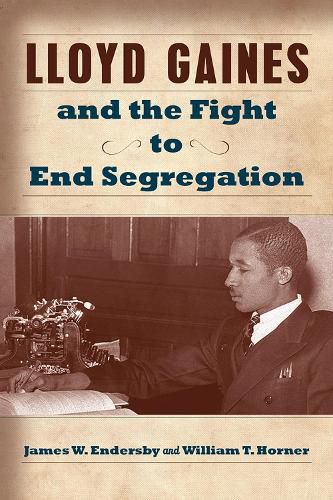Readings Newsletter
Become a Readings Member to make your shopping experience even easier.
Sign in or sign up for free!
You’re not far away from qualifying for FREE standard shipping within Australia
You’ve qualified for FREE standard shipping within Australia
The cart is loading…






80 years ago, Lloyd Gaines’s application to the University of Missouri law school was denied based on his race. Gaines and the NAACP challenged the university’s deci- sion. Missouri ex rel. Gaines v. Canada (1938) was the rst in a long line of decisions by the U.S. Supreme Court regarding race, higher education, and equal opportunity. The court case drew national headlines, and the NAACP moved Gaines to Chicago after he received death threats. Before he could attend law school, he vanished.
This is the rst book to focus entirely on the Gaines case and the vital role played by the NAACP and its lawyers including Charles Houston, known as the man who killed Jim Crow - who advanced a concerted strategy to produce political change. Horner and Endersby also discuss the African American newspaper journal- ists and editors who mobilized popular support for the NAACP’s strategy. This book reveals an important step toward the broad acceptance of the principle that racial segregation is inherently unequal.
$9.00 standard shipping within Australia
FREE standard shipping within Australia for orders over $100.00
Express & International shipping calculated at checkout
80 years ago, Lloyd Gaines’s application to the University of Missouri law school was denied based on his race. Gaines and the NAACP challenged the university’s deci- sion. Missouri ex rel. Gaines v. Canada (1938) was the rst in a long line of decisions by the U.S. Supreme Court regarding race, higher education, and equal opportunity. The court case drew national headlines, and the NAACP moved Gaines to Chicago after he received death threats. Before he could attend law school, he vanished.
This is the rst book to focus entirely on the Gaines case and the vital role played by the NAACP and its lawyers including Charles Houston, known as the man who killed Jim Crow - who advanced a concerted strategy to produce political change. Horner and Endersby also discuss the African American newspaper journal- ists and editors who mobilized popular support for the NAACP’s strategy. This book reveals an important step toward the broad acceptance of the principle that racial segregation is inherently unequal.